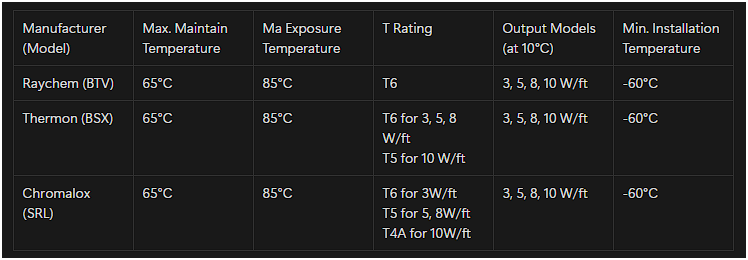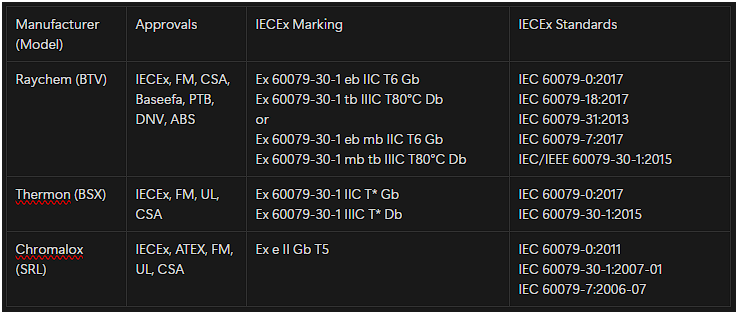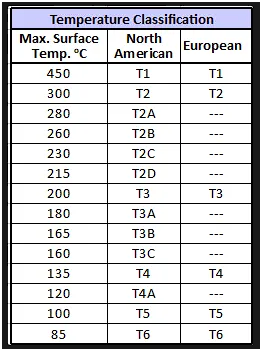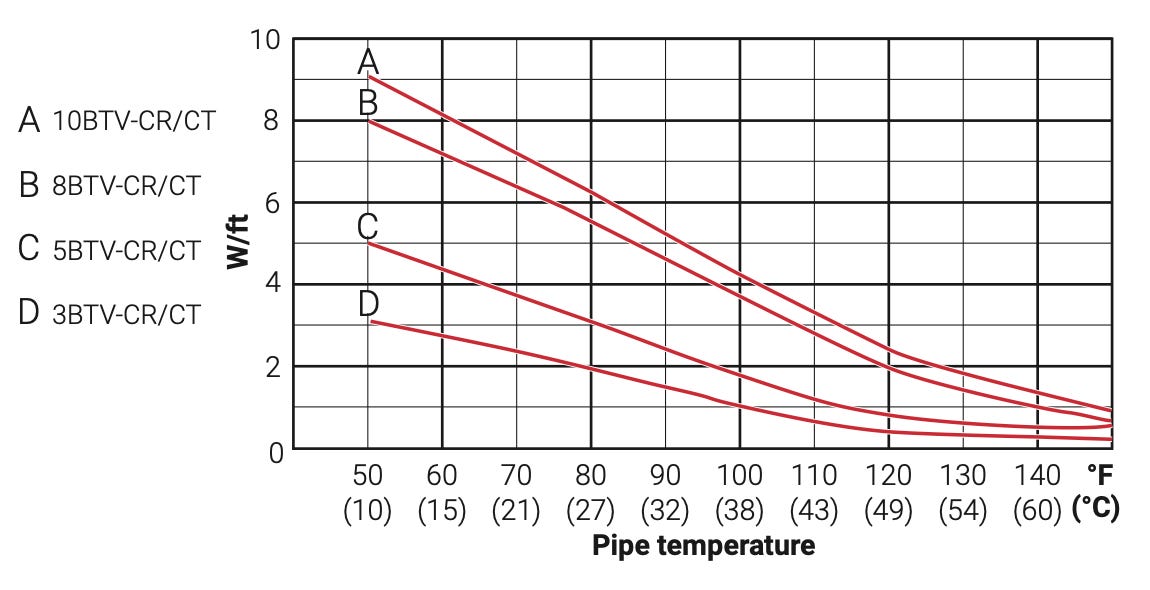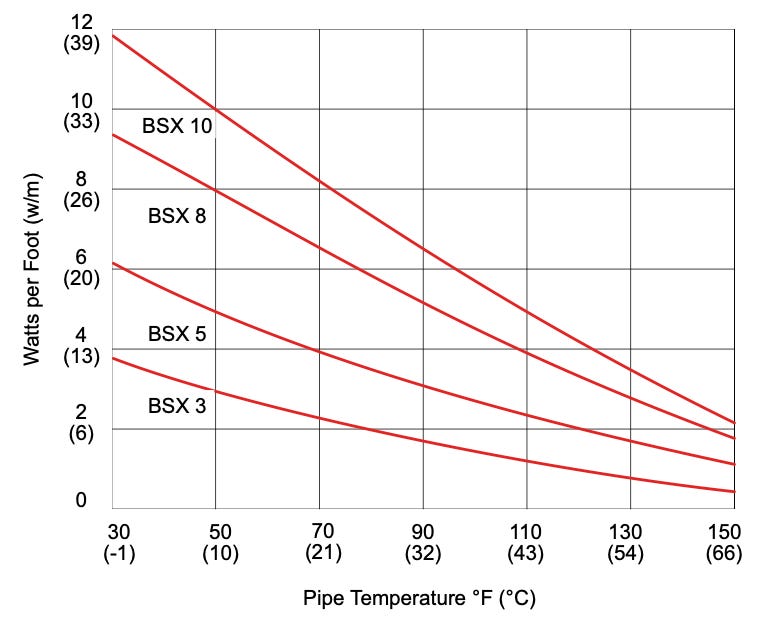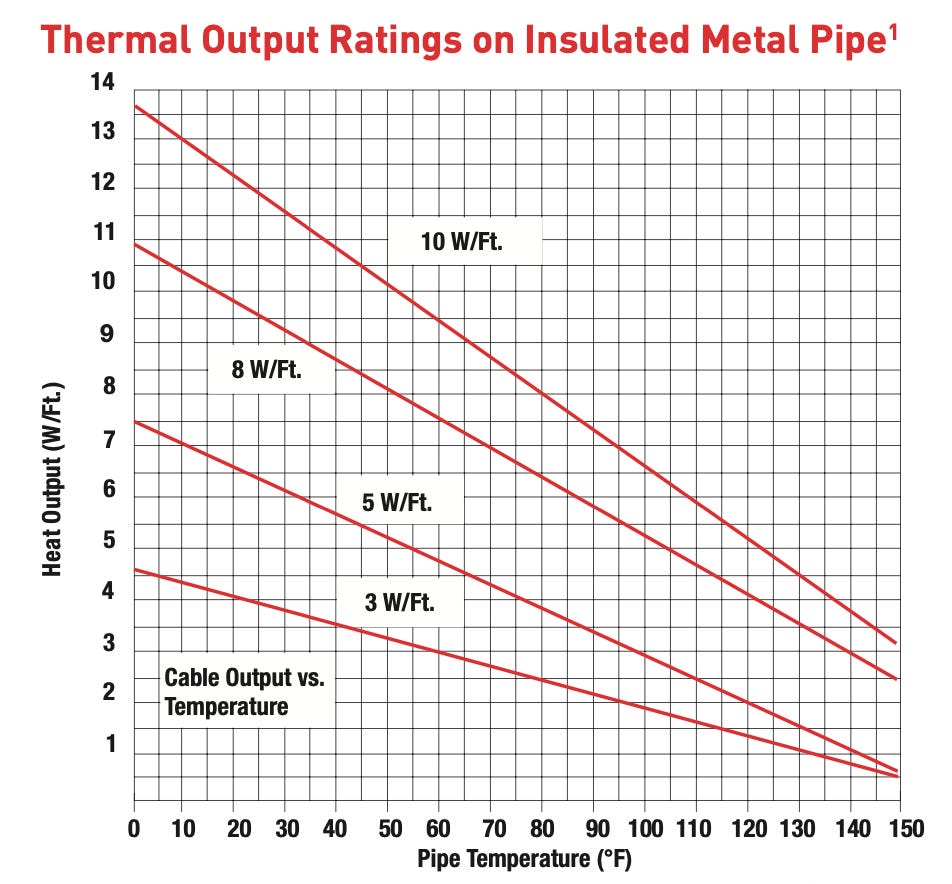Which Manufacturer’s Self-Regulating Heating Cable is the Best? Comparison of Major Manufacturer's Cable For Low Temperature
In industrial projects that use electrical heat tracing systems, local distributors of well-known self-regulating (SR) heating cable manufacturers—sometimes the manufacturers themselves—often participate. SR cables are by far the most popular choice in such projects. But when faced with the task of selecting one among different manufacturers, how do you make the best choice?
In the following articles, we’ll compare SR cables from three major manufacturers: Raychem,Thermon, and Chromalox. This comparison will help you determine which option is most suitable for your needs.
All the data presented here is sourced from the catalogs and IECEx certificates of each manufacturer.
We will classify the SR cables into three categories: ‘low temperature,’ ‘medium temperature,’ and ‘high temperature.’ In this article, we will only compare the SR cables for ‘low temperature’.
SR Cable for low temperature
This category of cables is typically used for freeze protection of pipes or tanks.
Maximum Maintain Temperature / Maximum Exposure Temperature
These values are used to determine whether a cable can be used in a specific pipe.
In this regard, all three manufacturers provide similar specifications.
T-rating
What is T-Rating? It's based on the maximum surface temperature of the cable.
Raychem’s BTV has a consistent T6 rating, meaning it has the lowest maximum surface temperature, making it suitable for higher-risk environments.
Thermon’s BSX is rated T5 for the 10 W/ft model, while Chromalox’s SRL is rated T5 for the 5 and 8 W/ft models and T4A for the 10 W/ft model. This indicates that the BSX and SRL allow higher surface temperatures than the BTV.
In terms of safety, Raychem's cable is more favorable in environments requiring low surface temperatures, while Thermon and Chromalox may be more suitable for environments that require higher surface temperatures.
Output
All three manufacturers offer similar output standards for low temperature—3, 5, 8, 10 W/ft at 10°C.
How does the output change as temperatures increase? Although exact formulas are not provided in public data, we can estimate from the following graphs.
Raychem BTV Output Graph:
Thermon BSX Output Graph:
Chromalox SRL Output Graph:
If we estimate the output at 130°F (54°C), we get the following values:
From this, we can conclude that Raychem’s BTV output drops more rapidly as temperatures rise. In comparison, Thermon and Chromalox cables perform better at higher temperatures, with Chromalox's SRL offering the highest output.
Minimum Installation Temperature
All three manufacturers specify the same minimum installation temperature of -60°
Approvals
Each manufacturer holds certifications for both the European and American markets. Although there are slight differences, all meet the necessary requirements for approval.
IECEx Marking
Raychem’s BTV has both increased safety (‘e’) and encapsulation (‘m’) markings, whereas Thermon’s BSX and Chromalox’s SRL only have increased safety (‘e’) markings
Encapsulation (‘m’) refers to sealing internal electrical components to prevent any ignition sources from interacting with the external environment. This gives Raychem’s BTV a higher level of protection, making it suitable for more extreme environments.
IECEx Standards
Raychem’s BTV has undergone additional testing due to its encapsulation (‘m’) marking, as indicated by the extra standards listed in the table.
Chromalox’s SRL uses slightly older standards, which in rare cases could present issues for approval, but generally, it should not pose a problem.
Conclusion
Raychem’s BTV is known for its reliability and safety, making it a solid choice. However, if you need a cable with higher output at higher temperatures, Thermon’s BSX or Chromalox’s SRL might be more suitable options.




